By clicking a retailer link you consent to third-party cookies that track your onward journey. This enables W? to receive an affiliate commission if you make a purchase, which supports our mission to be the UK's consumer champion.
Best wi-fi routers: upgrade your wi-fi with top rated models

Most of us receive a free wi-fi router from our internet service provider (ISP) when we sign up for a broadband deal. These free models can be pretty basic and, while they usually do a decent job, you'll often get better speeds and improved performance by upgrading.
Not everyone needs the top-of-the-range speed and coverage that comes with the latest and greatest router, and there’s no need to pay for features or tools (such as parental controls) that you'll likely never use.
But if you have several family members trying to stream Netflix, surf the internet or play games online at the same time, then our testing has found that upgrading or replacing your existing router can make a world of difference.
Buying your own third-party wi-fi router, from manufacturers such as Amazon Eero, Asus or TP-Link will typically also give you access to extra features such as more connectivity options (network and ports), parental controls and file sharing.
How our tests find you the best
We’ve tested 10 ISP and 19 third-party wi-fi routers
We assess internet service provider (ISP) and third-party wi-fi routers, so we can tell you if upgrading your router will help you get more from your broadband package.
Connection speeds and coverage
Swift connection speeds and a good field of coverage make all the difference when you stream, game and work online. The best wi-fi routers will tick all the boxes so you’ll never be frustrated by poor connection.
Handling multiple devices
Our homes contain tons of tech, all demanding connection and often at the same time. We stress test routers with multiple devices to see which buckle under the strain.
We also test…
How straightforward each router is to setup and how easy it is to adjust settings and turn on extra features. Plus, as gateways to the internet, we check how secure each model is.
The ISP wi-fi routers we tested
The biggest brands and the most popular 10 ISP routers are listed below.
Only logged-in Which? members can view the ISP wi-fi router test results.
Join Which? to get instant access to our test results and Best Buy recommendations.
| Wi-fi router | Price | Test score | Connections/ports | Bands | Coverage | Stress test |
|---|---|---|---|---|---|---|
Sign up to reveal Get instant access to this and all our scores and recommendations Unlock tableDigital £8.99 per month, cancel any time. Already a member? Log in | 69% | Five ethernet ports (four LAN, one WAN) | Dual-band: 2.4GHz and 5GHz | |||
| 65% | Four ethernet ports (three LAN, one WAN), one USB-A port | Dual-band: 2.4GHz and 5GHz | ||||
| 65% | Five ethernet ports (four LAN, one WAN) | Dual-band: 2.4GHz and 5GHz | ||||
| 64% | Four ethernet ports (three LAN, one WAN), one USB-A port | Dual-band: 2.4GHz and 5GHz | ||||
| 64% | Four ethernet ports (three LAN, one WAN), one USB-A port | Dual-band: 2.4GHz and 5GHz | ||||
| 63% | Four ethernet ports (three LAN, one WAN), one USB-C port | Dual-band: 2.4GHz and 5GHz | ||||
| 62% | Five ethernet ports (four LAN, one WAN), one USB-A port | Dual-band: 2.4GHz and 5GHz | ||||
| 61% | Four ethernet ports (all LAN) | Dual-band: 2.4GHz and 5GHz | ||||
| 53% | Four ethernet ports (all LAN) | Dual-band: 2.4GHz and 5GHz | ||||
| 51% | Five ethernet ports (four LAN, one WAN) | Dual-band: 2.4GHz and 5GHz |
Sign up to reveal
Get instant access to this and all our scores and recommendations
Unlock tableDigital £8.99 per month, cancel any time.
Already a member? Log in
Dates tested: May 2023, February 2024. Page last checked: July 2025. We're not able to show every retailer and cheaper prices may be available. We've tested 10 ISP routers in total. All our speed and performance assessments are based on results from our test lab. Individual performance may vary based on the line speed from your broadband provider.
The third-party wi-fi routers we tested
The biggest brands and the most popular 10 third-party routers are listed below.
Only logged-in Which? members can view the third-party wi-fi router test results.
Join Which? to get instant access to our test results and Best Buy recommendations.
| Wi-fi router | Price | Test score | Connections/ports | Bands | Coverage | Stress test |
|---|---|---|---|---|---|---|
Sign up to reveal Get instant access to this and all our scores and recommendations Unlock tableDigital £8.99 per month, cancel any time. Already a member? Log in | 82% | Four ethernet ports (all LAN), one USB-C port | Tri-band: 2.4GHz, 5GHz and 6GHz | |||
| 79% | Five ethernet ports (four LAN, one WAN), one USB-A 3.0 port | Dual-band: 2.4GHz and 5GHz | ||||
| 79% | Five ethernet ports (four LAN, one WAN) | Dual-band: 2.4GHz and 5GHz | ||||
| 77% | Two ethernet ports (one LAN, one WAN) | Tri-band: 2.4GHz, 5GHz and 6GHz | ||||
| 76% | Five ethernet ports (four LAN, one WAN), one USB-A 3.2 port | Tri-band: 2.4GHz, 5GHz and 6GHz | ||||
| 76% | Five ethernet ports (four LAN, one WAN), one USB-A 3.0 port | Dual-band: 2.4GHz and 5GHz | ||||
| 76% | Five ethernet ports (four LAN, one WAN) | Dual-band: 2.4GHz and 5GHz | ||||
| 75% | Five ethernet ports (four LAN, one WAN) | Dual-band: 2.4GHz and 5GHz | ||||
| 70% | Five ethernet ports (four LAN, one WAN), one USB-A port | Dual-band: 2.4GHz and 5GHz | ||||
| 65% | Four ethernet ports (three LAN, one WAN) | Dual-band: 2.4GHz and 5GHz |
Sign up to reveal
Get instant access to this and all our scores and recommendations
Unlock tableDigital £8.99 per month, cancel any time.
Already a member? Log in
Date tested: January 2022, May 2023, November 2023, February 2024, May 2024, July 2024, August 2024, December 2024, June 2025. Page last checked: July 2025. We're not able to show every retailer and cheaper prices may be available. We've tested 19 third-party routers in total, but the table shows our top picks. All our speed and performance assessments are based on results from our test lab. Individual performance may vary based on the line speed from your broadband provider.
A selection of the third-party wi-fi routers we tested are listed in alphabetical order below.
Only logged-in Which? members can view the best wi-fi routers from our tests.
Join Which? to get instant access to our test results and Best Buy recommendations below.
Amazon Eero 6 router

Most recently tested May 2023
Wireless standard Wi-Fi 6
ISP or third-party Third-party
Security concerns None
Need to know Two ethernet ports (both LAN), one USB-C port
Asus RT-AX57

Most recently tested February 2024
Wireless standard Wi-Fi 6
ISP or third-party Third-party
Security concerns None
Need to know Five ethernet ports (four LAN, one WAN)
Asus RT-BE92U
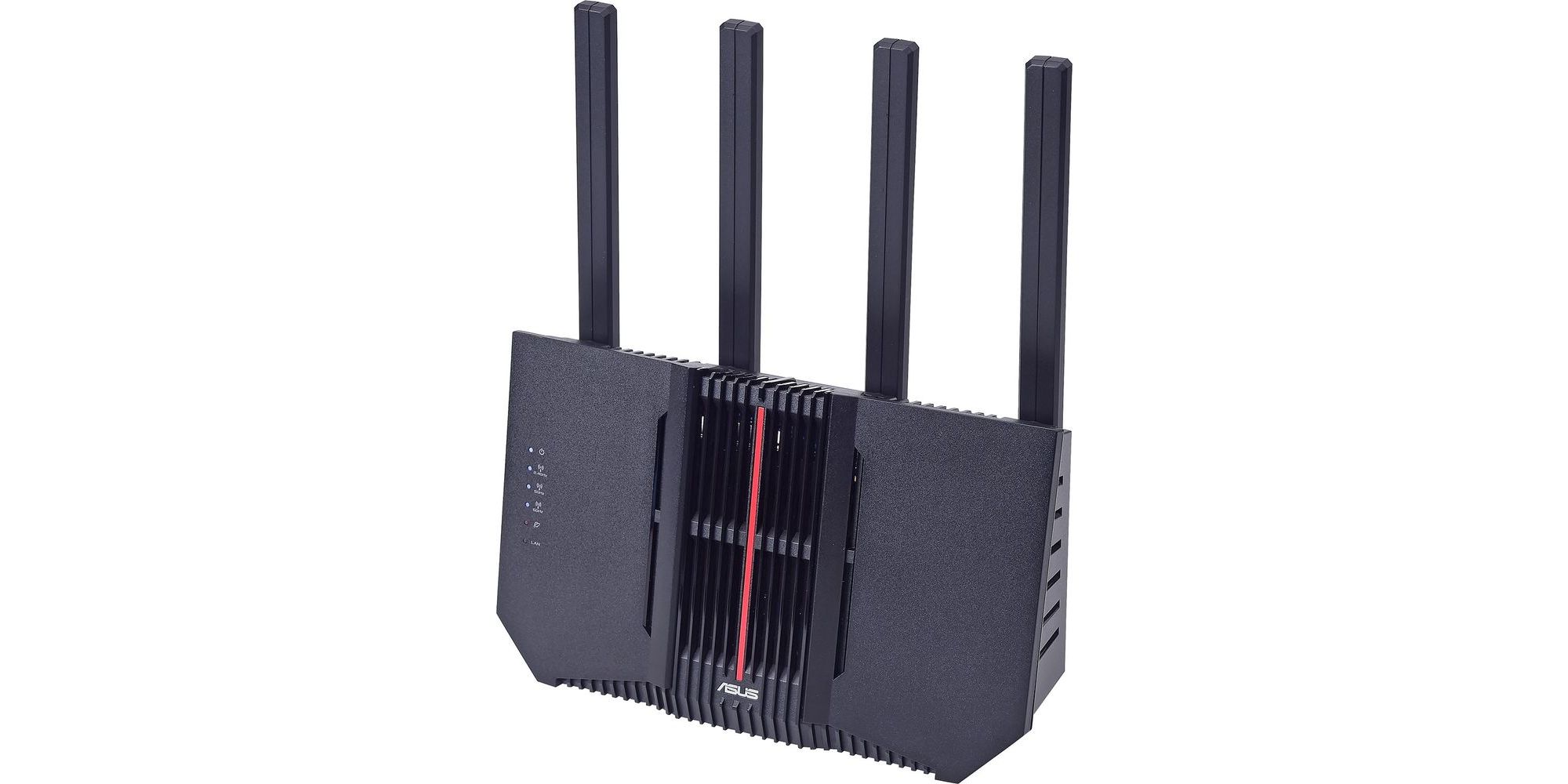
Most recently tested June 2025
Wireless standard Wi-Fi 7
ISP or third-party Third-party
Security concerns None
Need to know Five ethernet ports (four LAN, one WAN), one USB-A 3.2 port
Asus TUF-AX3000 V2
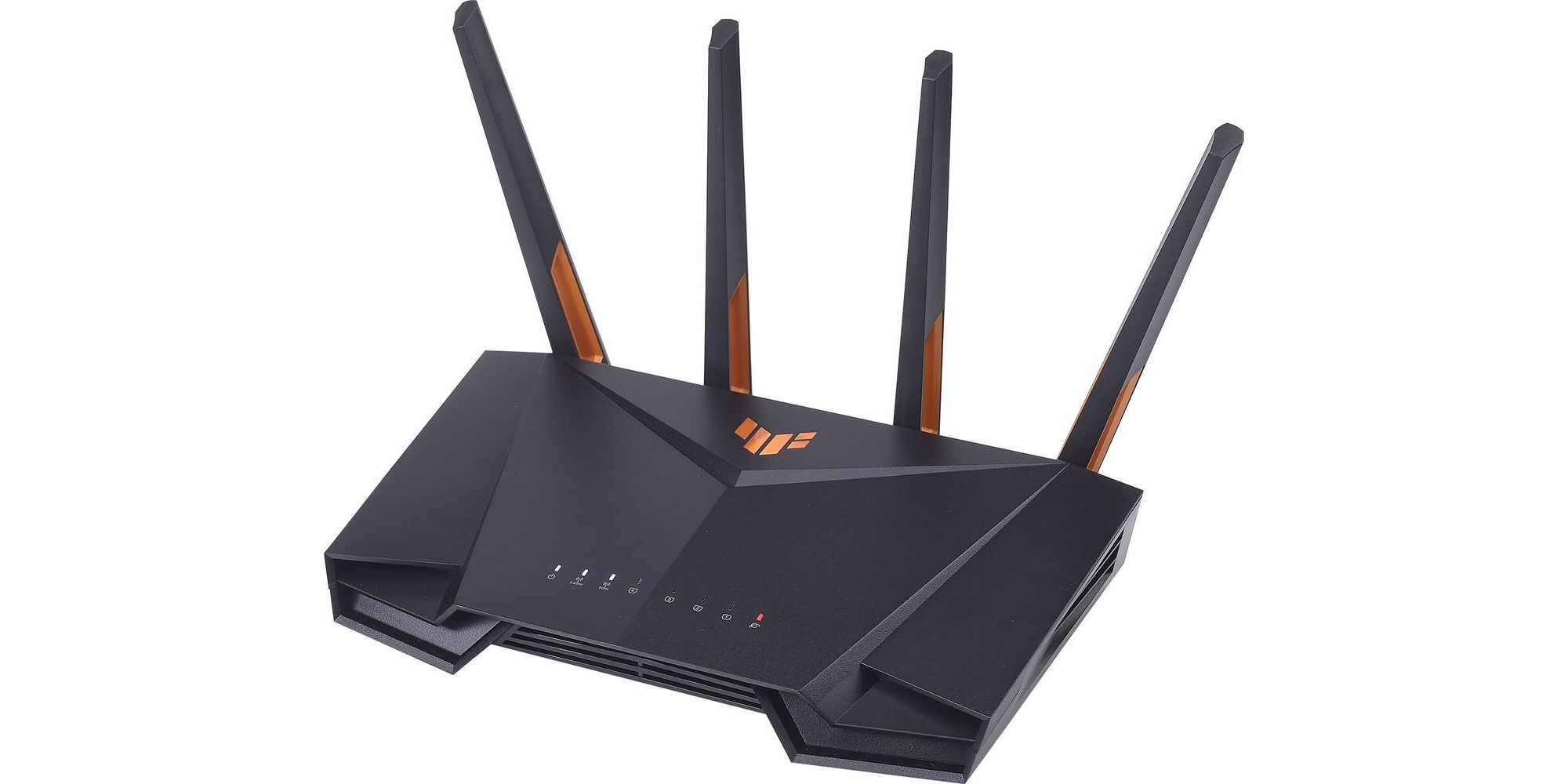
Most recently tested June 2025
Wireless standard Wi-Fi 6
ISP or third-party Third-party
Security concerns None
Need to know Five ethernet ports (one WAN, four LAN), one USB-A 3.2 port
Asus TUF-AX4200
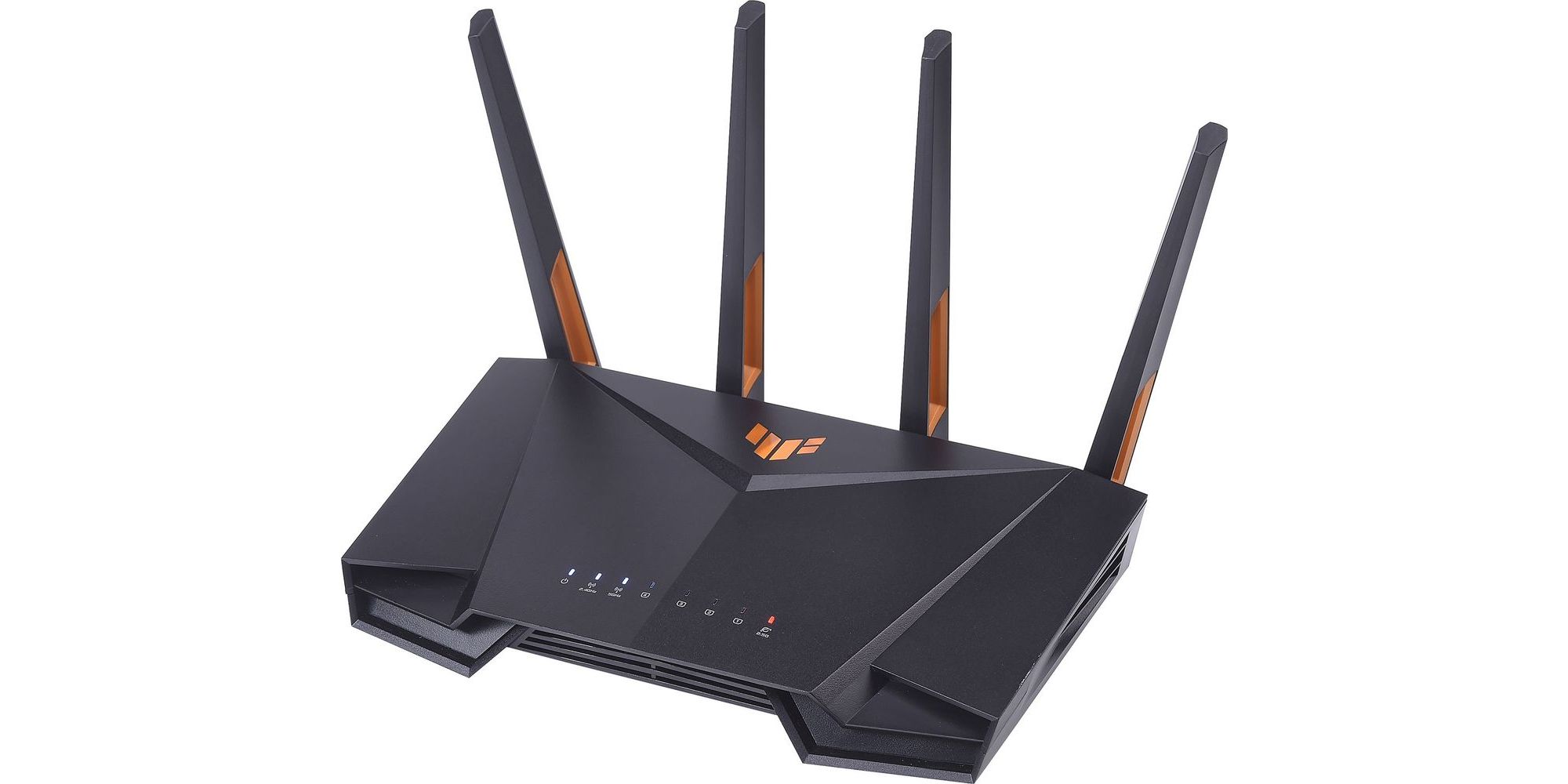
Most recently tested June 2025
Wireless standard Wi-Fi 6
ISP or third-party Third-party
Security concerns None
Need to know Five ethernet ports (one WAN, four LAN), one USB-A 3.2 port
Need antivirus for your laptop or desktop PC? See our pick of the best antivirus, including superb free antivirus
TP-Link Archer AX12

Most recently tested February 2024
Wireless standard Wi-Fi 6
ISP or third-party Third-party
Security concerns None
Need to know Four ethernet ports (three LAN, one WAN)
TP-Link Archer AX55

Most recently tested November 2023
Wireless standard Wi-Fi 6
ISP or third-party Third-party
Security concerns None
Need to know Five ethernet ports (four LAN, one WAN), one USB-A port
TP-Link Archer AXE75
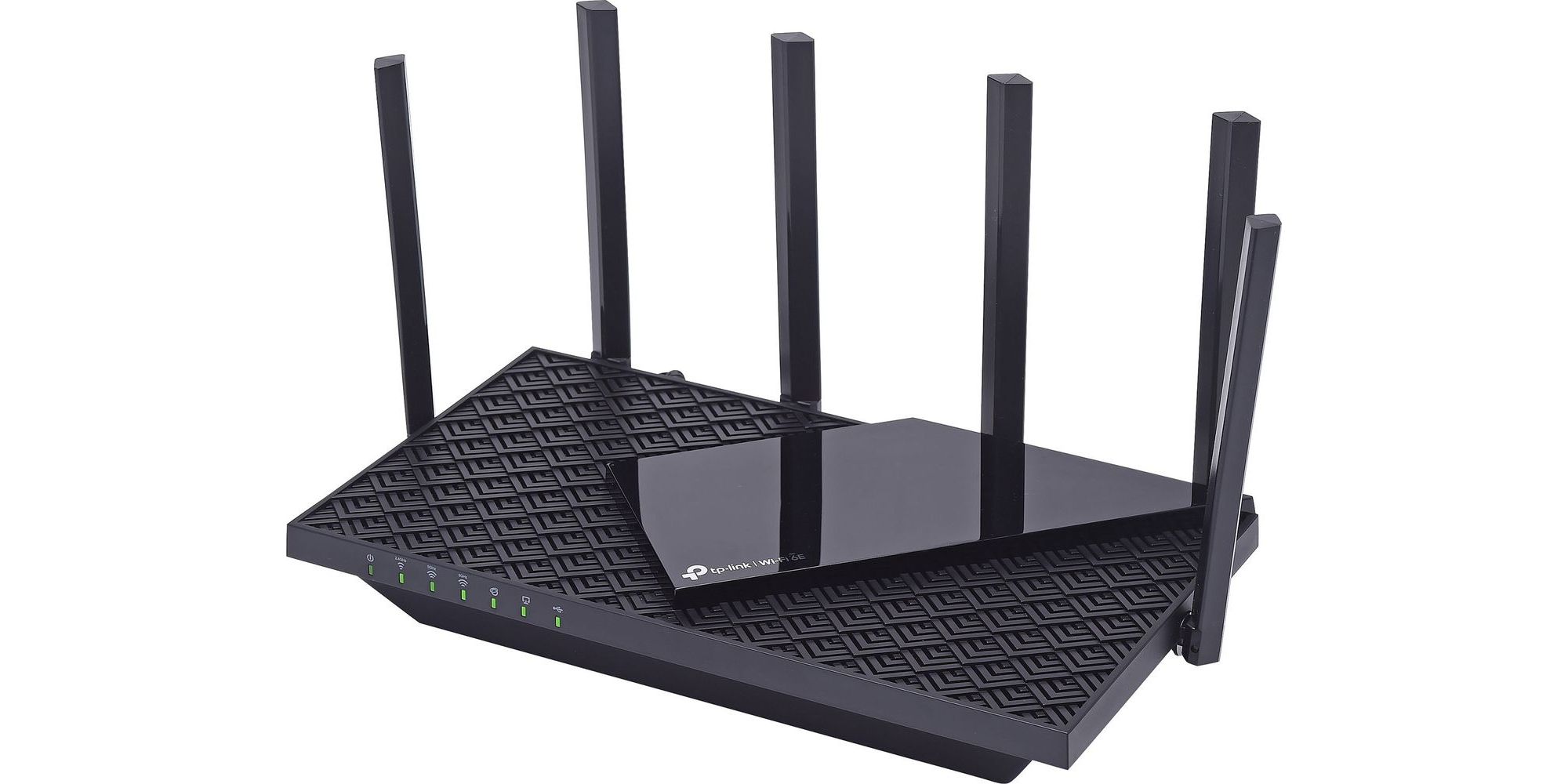
Most recently tested December 2024
Wireless standard Wi-Fi 6E
ISP or third-party Third-party
Security concerns None
Need to know Five ethernet ports (one WAN, four LAN), one USB-A 3.0 port
TP-Link Archer BE400 (BE6500)
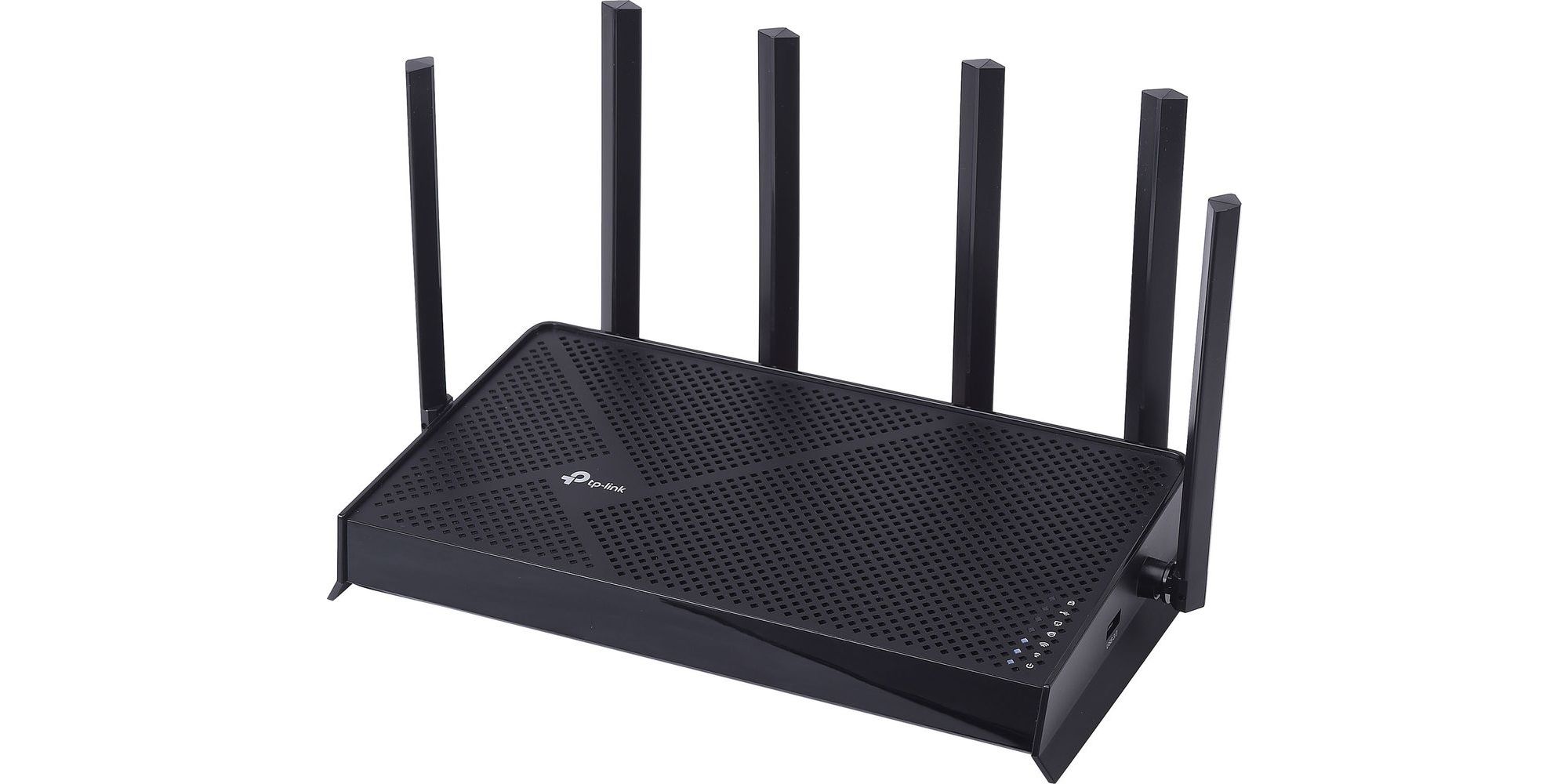
Most recently tested June 2025
Wireless standard Wi-Fi 7
ISP or third-party Third-party
Security concerns None
Need to know Five ethernet ports (four LAN, one WAN)
TP-Link Archer C50
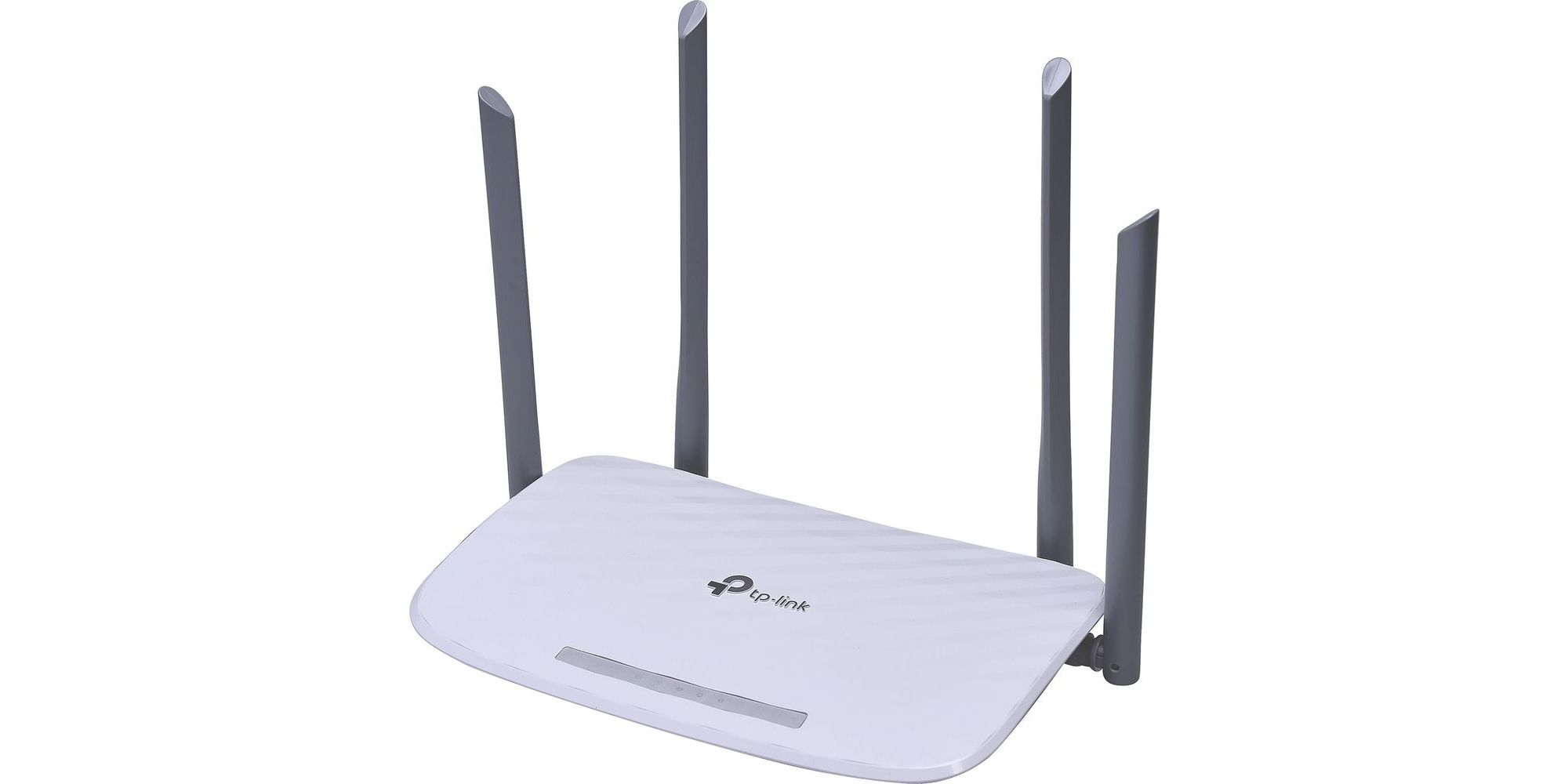
Most recently tested December 2024
Wireless standard Wi-Fi 5
ISP or third-party Third-party
Security concerns None
Need to know Five ethernet ports (four LAN, one WAN)
More third-party router from our tests
Here’s how the rest of the nine third-party routers from our tests measured up, listed in alphabetical order.
| Wi-fi router | Price | Test score | Connections/ports | Bands | Coverage | Stress test |
|---|---|---|---|---|---|---|
| Amazon Eero Max 7 | SQUIRREL_TEXT_50013298 | |||||
| Linksys Hydra Pro 6 | SQUIRREL_TEXT_50013301 | |||||
| Linksys Velop Pro Wi-fi 6E MX6201-KE (1 Pack) | SQUIRREL_TEXT_50012536 | |||||
| Netgear Nighthawk RS100 | SQUIRREL_TEXT_50021630 | |||||
| Netgear Nighthawk RS200 | SQUIRREL_TEXT_50021619 | |||||
| Netgear Nighthawk XR1000 | SQUIRREL_TEXT_50021629 | |||||
| Netgear RAX70 Router (AX6600) | SQUIRREL_TEXT_50007984 | |||||
| TP Link Archer AX53 | SQUIRREL_TEXT_50013302 | |||||
| TP Link Archer C64 AC1200 | SQUIRREL_TEXT_12878211 |
Date tested: January 2022, May 2023, November 2023, February 2024, May 2024, July 2024, August 2024, December 2024, June 2025. Page last checked: July 2025. We're not able to show every retailer and cheaper prices may be available. We've tested 19 third-party routers in total, but the table shows our top picks. All our speed and performance assessments are based on results from our test lab. Individual performance may vary based on the line speed from your broadband provider.
Which? Don't Buy wi-fi routers
Our tests uncover the best and the worst. If a product performs so poorly or fails a crucial security test, we name it a Don't Buy. So far, we've tested one wi-fi router that is a Don't Buy.
This router offers abysmal connection speeds, regardless of whether you're near or far from the unit. It also buckles under the stress of many devices connecting simultaneously.
How we test wi-fi routers

How good is wi-fi coverage and speed?
To find out how well the router performs for wi-fi coverage and speed, we use a variety of tests:
- We test how well the router copes with different multimedia devices, including streaming 4K Netflix, YouTube, audio and online file transfer, running simultaneously around the home. This gives us our first indication of the coverage you'll get and whether it will be possible to do a few things at once.
- Coverage is also assessed by measuring exact speeds all around the test house. This shows whether you'll get decent speeds, even at hard-to-reach corners of the home.
- We assess how well the router will cope when there are lots of devices connected, all requiring a lot of bandwidth. This tells us how well the router is suited to homes with a lot of devices and whether it will conk out if you're trying to put it under a lot of stress.
Below is an example of a heat map that we get from our coverage testing. The greener the colour, the faster the signal is.

Is it easy to set up?
- We review the instructions that come with the router and then assess how easy it is to set up for a beginner and whether it has more technical settings for advanced users.
- As many routers now have easy setup instructions on accompanying apps which are free to download, or from web interfaces – if applicable, we assess how friendly these methods are (whether through visual or video walkthroughs) in helping you set it up.
- We also look at how easy it is to set up a local network and apply parental controls and any other useful features.
Are there any security issues?
- Data encryption We check that the most important data, such as your personal details, is encrypted, and where it’s going, particularly if it goes abroad. If we spot anything out of the ordinary, we’ll raise an alert and investigate the issue.
- Data transparency When setting up online, and if available, on both the Android and Apple app (there can be differences between the versions of the app) – we check what permissions are requested (such as your location and access to the camera) and the reasoning behind it, to make sure everything you’re giving away really is necessary.
- Decommissioning Our test looks at how easy it is to reset the product and get rid of all of your data. This is important when disposing of your old router (whether to recycle, give away or sell). We also make sure to check that there are no remnants of the previous user’s data.
- Firmware Out-of-date or poorly maintained firmware can mean there are gaps that could allow a hacker to access your device. We check for any software vulnerabilities.
- Man-in-the-middle attacks This is when a hacker acts as an eavesdropper, trying to catch information passing to and from your router. We run tests on every model to see if it could be susceptible to this kind of attack, and if it is, we’ll make sure not to recommend the product.
- Other types of attacks New hacking threats are constantly emerging, so we make sure to keep on top of the latest risks and update our test programme as necessary.
- Password policy We assess whether password policies are strong. If they're visible on the box or easily guessable, both of which could allow people into your network to potentially access your data, we'll flag this in our reviews.
We regularly revisit the Wi-Fi routers available to see if there are any more popular models that need testing, and when we find them, we test them.
Find out more about how Which? is not influenced by product manufacturers or retailers and how your support helps us to stay editorially independent.
Which type of router is right for me?
For many people, the router that comes with their broadband contract (such as the BT Smart Hub or Sky Max Hub) will give them quick enough internet and good enough coverage that they never need to consider anything else.
But if you're experiencing issues, upgrading to a third-party router or using an extender or mesh system as a supplement to your ISP will likely solve the issue.
We've laid out a few scenarios to help you narrow down the right option for you:
- I don't get quick wi-fi throughout the house A top-rated third-party router is not going to make your 20Mbps package feel like 100Mbps, but it will help you to get more consistent speeds throughout the entire house.
- I have one room where the internet drops out Extenders are the best option for one or two rooms where the internet is slow or drops out. A pricier mesh system would probably be overkill in this scenario.
- Several rooms in my house don't have any wi-fi signal The best way to cover a large space or circumvent lots of obstacles (such as furniture, walls and ceilings) is by incorporating a mesh system. These can be strategically placed to create a wider, whole-home net of wi-fi coverage.
- My speeds plummet when lots of devices are connected at once The more devices you have connected to the router at the same time, the slower the speeds will become. By upgrading to a more advanced router, you can control how bandwidth is shared around by assigning certain devices as high priority.
Do I have to use an ISP router?

Upgrading to a third-party router can offer advantages over internet service provider (ISP) routers. For example, you have more control through advanced settings and flexibility – you can use them with any broadband provider and continue to use them even if you switch. However, third-party routers don't typically have built-in modems.
The terms 'modem' and 'router' are often confused. You need a modem to connect to the internet – the router then transfers the data, in the form of webpages and streamed content, to your connected devices.
If a third-party router does have a compatible built-in modem, you won't need any other devices. You simply connect your new router using the cable that comes through the wall in the same way you connected your ISP router. However, if it doesn't have a built-in modem, you'll need to connect your new third-party router to your existing ISP router.
Additionally, some ISP routers have different connections. For example, the Virgin Hubs connect via a unique coaxial cable through the wall. So don't throw away your ISP router until you know for sure your new one has the right connections.
How to upgrade your router free of charge
If you've been with the same broadband provider for years, you could be stuck with a router that's long been outdated. In May 2021, we discovered a range of older routers that could be insecure. If you're in this situation, it's worth phoning your provider to see if you can get a free upgrade, which could result in far better performance.
If your contract with your provider has expired, switching to a new provider could not only save you money on your monthly bills, but will also get you the latest kit. Read our guide to the best and worst broadband providers to see how yours stacks up, and check the best broadband prices to see how much you could save.
However, ISPs don’t typically provide the best-performing routers. A third-party router could provide better coverage, speed and, for tech-savvy users, include more advanced features to make your wireless network more efficient.
What is WPS, and why don't we recommend it
WPS stands for Wi-Fi Protected Setup. You will likely have a WPS button on your router, and when pressed, your router will search for compatible devices and will allow for a quick connection, without needing to input the router's password.
Although this is an easy way to connect devices to your router as it bypasses your router's password security, it's not the most secure way to connect and should be used sparingly, if at all.
Single-band, dual-band and tri-band routers explained
Wi-fi routers can operate on several frequencies (bands):
- 2.4GHz offers further wi-fi coverage range but has slower speeds.
- 5GHz offers faster speeds but has reduced range.
- 6GHz offers even faster speeds than 5GHz, but has the weakest range of all frequencies.
Single-band routers operate on one wireless frequency only (the 2.4GHz band). While it works well for surfing the internet, this frequency can get overly congested, making it weaker for high-bandwidth tasks (such as streaming videos) and when many devices are connected at once.
Dual-band routers are the most common, providing less interference and faster speeds. They transmit data over both the 2.4GHz and the 5GHz bands. This allows you, for example, to browse the internet on the 2.4GHz band while streaming HD films on the faster 5GHz band, with neither band getting overloaded.
Tri-band routers add an additional frequency to help further reduce congestion, especially useful in tech-heavy households. Some offer an extra 5GHz band, while models with Wi-Fi 6E and 7 capabilities add a 6GHz band.
Wireless router standards and Wi-Fi 6

If you hear the term 'wireless standard' – for example, 802.11ac or 802.11ax – take it to mean 'speed'. The first generation of wireless routers was ‘b', followed by ‘g', ‘n', 'ac', ‘ax', and now 'be'.
Each version offers improved performance, including faster speeds, longer range, greater efficiency when dealing with connected devices, less interference and reduced congestion.
Since the release of 'axe', wi-fi standards have been renamed, starting at Wi-Fi 4 (n). These are the current wireless standards in use:
- Wi-Fi 4 (n)
- Wi-Fi 5 (ac)
- Wi-Fi 6 and Wi-Fi 6E (both ax)
- Wi-Fi 7 (be)
However, it's important to understand that to benefit from the latest standard, both your router and your connected device (ie your laptop, tablet or games console) will need to support the same technology. Otherwise, the wi-fi connection will drop back to using an older, less powerful standard.
